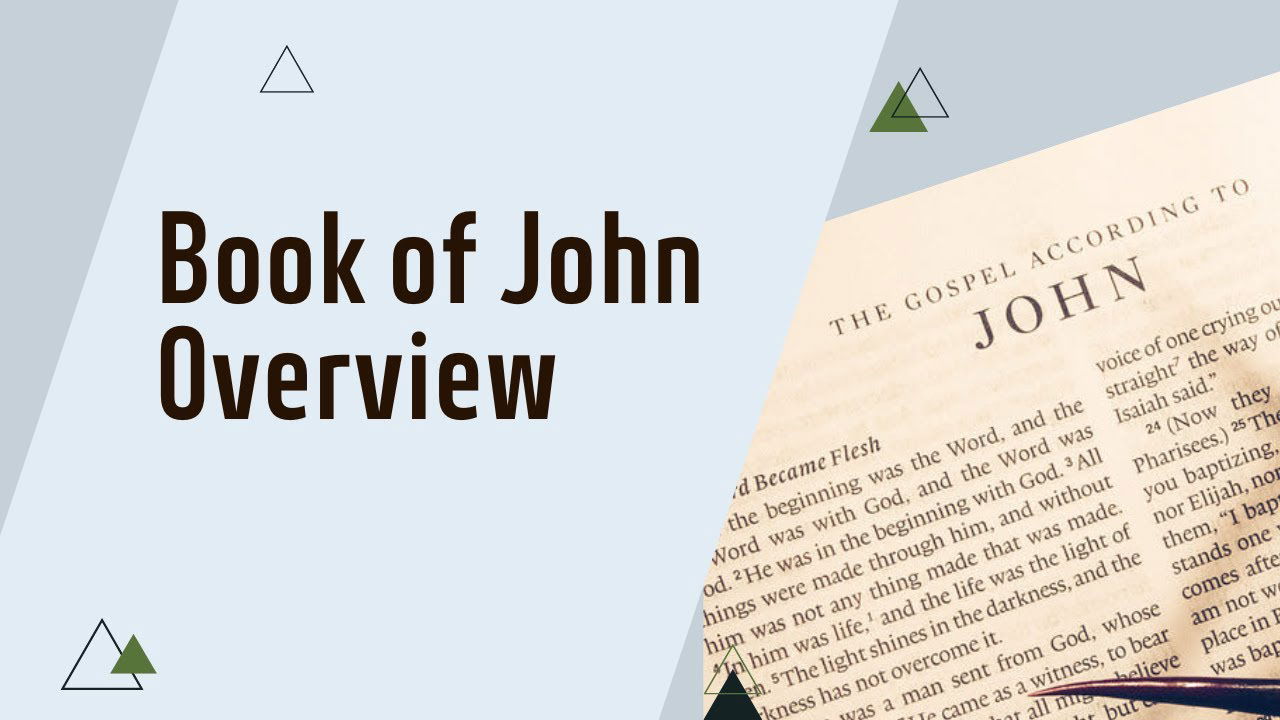Overview and Background of the Gospel of John

Authorship and Date
The Gospel of John was written by John the Apostle, the son of Zebedee, the brother of James, and one of the “sons of thunder” (Mark 3:17). He was part of Jesus’ inner circle with Peter and James and is often referred to as “the disciple whom Jesus loved” (John 13:23; 21:20). Church tradition and early Christian writers strongly affirm John’s authorship. Most scholars believe the Gospel was written between AD 85–95, though some suggest it may have been earlier. By this time, John was an older man, likely writing from Ephesus, reflecting back on his years of walking with Jesus.
Purpose of the Book
John clearly states why he wrote his Gospel:
“But these are written that you may believe that Jesus is the Messiah, the Son of God, and that by believing you may have life in His name.” (John 20:31)The two key purposes are:
- To inspire faith → John wanted readers to believe that Jesus is truly the Messiah and the Son of God.
- To offer life → Through faith in Christ, people would receive eternal life.
John’s Gospel is both evangelistic and theological. It is evangelistic because it calls unbelievers to faith in Christ, and it is theological because it explains profound truths about who Jesus is.
Key Themes and Structure
1. Jesus as the Eternal Word (Logos)
John begins with a powerful declaration:
“In the beginning was the Word, and the Word was with God, and the Word was God” (John 1:1).
This shows Jesus’ eternal existence, divine nature, and role in creation. Unlike the other Gospels, John does not start with Jesus’ birth but with His divine origin.
2. Seven Miraculous Signs
John organizes much of his Gospel around seven specific signs (miracles) that point to Jesus’ divine identity:
- Turning water into wine (John 2:1–11)
- Healing the official’s son (John 4:46–54)
- Healing the lame man at Bethesda (John 5:1–15)
- Feeding the 5,000 (John 6:1–14)
- Walking on water (John 6:16–21)
- Healing the man born blind (John 9:1–41)
- Raising Lazarus from the dead (John 11:1–44)
John calls them “signs” because each miracle has a spiritual meaning pointing to Christ’s identity and mission.
3. Seven “I Am” Statements
John records seven times when Jesus uses the phrase “I Am” (echoing God’s name in Exodus 3:14) to describe Himself:
- “I am the Bread of Life” (6:35)
- “I am the Light of the World” (8:12)
- “I am the Door” (10:9)
- “I am the Good Shepherd” (10:11)
- “I am the Resurrection and the Life” (11:25)
- “I am the Way, the Truth, and the Life” (14:6)
- “I am the True Vine” (15:1)
These statements reveal Jesus’ divine authority and His role in providing spiritual life.
4. The Centrality of Belief
Faith and belief are repeated over and over again. The word “believe” appears about 100 times in the Gospel. John’s aim is for readers not just to know about Jesus, but to believe in Him personally.
5. The Glory of Jesus Revealed in Humility
John highlights how Jesus’ glory is not shown in worldly power but through humility, service, and sacrifice (John 13:1–17; Philippians 2:5–8). The ultimate display of His glory is at the cross, where He lays down His life for the world (John 12:23–24).
Differences from the Synoptic Gospels (Matthew, Mark, Luke)
- John focuses less on parables and exorcisms, and more on long discourses and deep theological truths.
- He emphasizes Jesus’ Judean ministry (in and around Jerusalem), while the Synoptics emphasize Galilee.
- Events like the raising of Lazarus, the washing of the disciples’ feet, and the detailed Farewell Discourse (John 13–17) are found only in John.
The Message of John
The Gospel of John is sometimes called “the Gospel of belief” or “the Gospel of signs.” It was written so that all might see that Jesus is not just a prophet or miracle worker, but God in the flesh (John 1:14), the Savior of the world.John presents Jesus as:
- Fully God and fully man
- The Lamb of God who takes away the sin of the world (John 1:29)
- The One who gives eternal life (John 3:16; John 10:10)
- The fulfillment of Old Testament prophecy
- The Messiah who calls us to believe and follow Him
In summary:
John wrote his Gospel as both testimony and invitation. He testified as an eyewitness of Jesus’ life, miracles, and teachings, and he invites us to believe in Jesus so that we may have eternal life. More than any other Gospel, John pulls back the curtain to reveal the heart of Jesus and His divine identity.